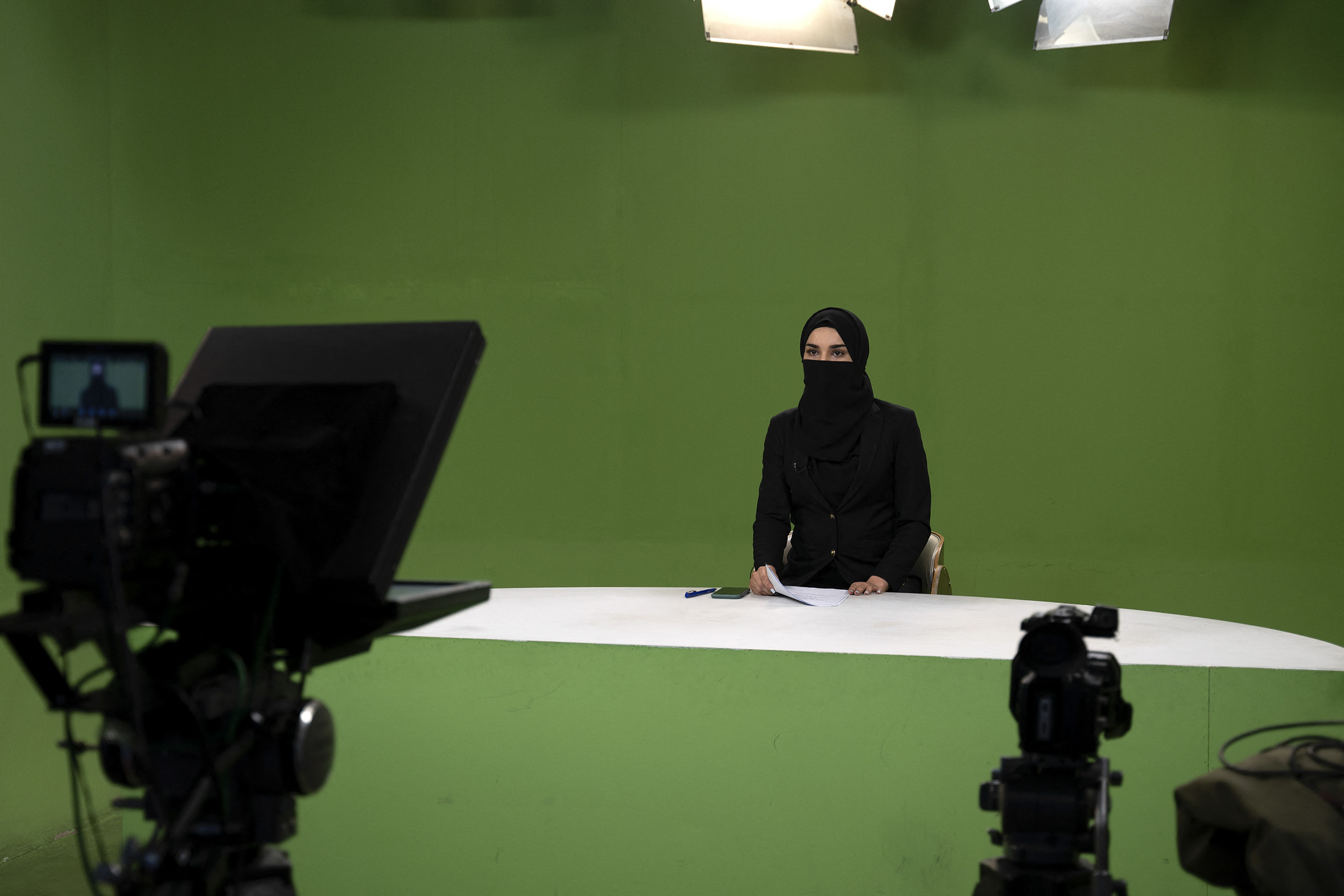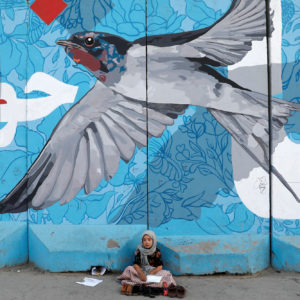The Taliban’s bid to make Afghan women invisible
Afghanistan’s tightening control on women is reversing many of their rights in that country, with women now ordered to wear veils, travel with men and stay out of schools.
Author:
2 June 2022

Although the conflict in Afghanistan has ended after 20 years, a fresh war is being waged on women in a country with deeply embedded cultural and ethnic traditions that impose control over every aspect of women’s lives. The rights and autonomy of women have been severely curtailed since the Taliban, who represent an extreme version of Afghan tradition, retook power in August last year.
An escalating humanitarian crisis has sunk more than half of the country’s population into extreme poverty and hunger, and the Taliban has roiled the lives of women and girls, with the regime restricting their movement, preventing many from working and barring the majority from secondary and higher education.
Related article:
When it seized power, the Taliban claimed it had changed and would respect women’s rights. Initially it appeared to adopt a more flexible attitude. But in the nine months since it retook Afghanistan, it has taken away the right of women to travel alone, to work outside healthcare and to access education.
Struggling to move from being an insurgent group to a governing political force, the Taliban has introduced more hard-line measures in recent weeks, confirming old fears that the group remains unchanged after two decades out of power. When the Taliban last ruled, between 1996 and 2001, it enforced strict restrictions on women’s dress and movement, and barred girls from going to school.
Shrinking space for women
Since ousting the Afghan government last year, the group has already stopped women from undertaking longer-distance journeys without a male guardian, and ordered taxi drivers to refuse to accept female passengers not wearing an Islamic hijab. Men and women have been assigned different days to visit parks.
While the ruling power has allowed female university students to return to classes in a newly introduced, strictly gender-segregated education system, it has not yet reopened high schools to girls. The regime has imposed a de facto ban on girls’ secondary education, despite public pressure resulting in the reopening of certain girls’ secondary schools in nine regions. The school ban was due to be lifted in late March but the regime reversed the decision at the last minute, drawing strong condemnation from domestic critics and foreign governments.
A slew of new edicts
In recent weeks the Taliban has now issued a series of new repressive edicts mandating women cover all but their eyes. The directives are to be enforced in part by penalising the women’s closest male relatives.
On 9 May, Afghanistan’s head of state Hibatullah Akhundzada issued a decree that women and girls should avoid going outdoors, and if they are to venture out, to cover up in loose clothing that only reveals their eyes – preferably, a burka.
According to the directive, if a woman ignores the order in the first instance, the Taliban will counsel and instruct the unveiled woman. If she does it a second time, she will be summoned; a third and she will be imprisoned for three days; a fourth and the unveiled woman’s guardian (such as her father, brother or husband) will be summoned to court for a stricter punishment, which could be imprisonment or being fired from government jobs. Older women and young girls are exempt from the order.
Related article:
On 21 May, the Taliban’s Ministry of Vice and Virtue issued another directive ordering all female television presenters to cover their faces, and declared that “the decision was final and that there was no room for discussion”.
Male broadcasters at several Afghan news networks wore masks in solidarity with their female colleagues, launching the #FreeHerFace social media campaign. Khatera Ahmadi, a ToloNews news anchor, told The Washington Post newspaper that she had no option but to obey the decision. The 26-year-old noted that she did not mind having to cover her face, but fears that the Taliban will follow the veil rule by prohibiting women from going to work altogether.
An investigative report by Reporters Without Borders and its partner organisation, the Centre for the Protection of Afghan Women Journalists, found that despite Taliban assurances that press freedom would be respected and women journalists would be allowed to keep working, many are “missing” from Afghanistan’s media landscape. The report noted that under 100 of Kabul’s 700 women journalists were still formally working at privately owned radio and television stations since the Taliban took over.
Widespread outcry
The new orders have sparked considerable outrage, with many claiming that they violate women’s rights to free expression and represent a reversal of years of progress in women’s rights across the country. Many critics contend that the current curbs on women’s rights in the nation are reminiscent of the Taliban’s previous rule.
The United Nations Assistance Mission in Afghanistan condemned the new face veil decree, noting it “contradicts numerous assurances” that the Taliban would respect the human rights of Afghan women and girls, and underscored that this was a formal directive rather than a recommendation that would be enforced.
The UN Security Council on 24 May also urged the Taliban to “swiftly reverse” the policies and practices impeding Afghan women and girls’ freedoms and rights and also reiterated its call on the Taliban to adhere to its commitments to reopen schools for all female students without further delay.
Criticising the Taliban’s order, former Afghan president Hamid Karzai said female television presenters were not obligated to obey Taliban directives and should not do so. “Burqa has come to Afghanistan probably 200 to 300 years ago, and countryside women don’t wear it,” said Karzai, adding Afghanistan has been a Muslim country for 1 400 years and that the covering of the face is a tradition “in some countries, [but] not an Afghan tradition”.
Related article:
Karzai further denounced the state’s decision to ban female students in grades 7 to 12, adding that the Afghan people will never accept the decision to ban girls from going to school.
The Taliban has defended its restrictions on women, saying they are in line with Islamic law and Afghan culture. Reacting to Karzai’s comments that female presenters should not follow the directives, the Taliban said that Karzai had sought women’s freedoms for the past 20 years to appease foreigners, but his wife did not have the same freedoms and has not appeared in the media – something he seemed to desire for the rest of Afghans.
Akif Muhajir, spokesperson for the ministry of vice and virtue, insists that the restrictions on the rights and public lives of women are for the common good. He describes the face covering as a “compulsory” part of the religion. Only 1% of Afghan women, he insists, are not already complying with the group’s understanding of how they should dress.
A legacy rooted in tradition
Afghanistan is a deeply conservative society, and many women wear the burqa, especially in rural areas. In larger cities such as Kabul, however, women often wear a modest headscarf, if not the full veil. Owing to deep-rooted patriarchy across different ethnic belts of Afghanistan, women’s participation in public life and local politics has always remained low.
More than laws or rules, customs dominate life in Afghanistan, and the most recent edict stems from traditional practices that predate the Taliban’s creation. Women’s rights are not an issue in Afghanistan because of the Taliban; rather, the Taliban represents an extreme form of rural Afghan social constructs. The Taliban is predominantly ethnic Pashtun, one of the largest ethnic groups in Afghanistan and a community with strict social restrictions, particularly in rural regions, where girls often marry at puberty and seldom leave their homes.
Taliban beliefs and practices are also rooted in “Pashtunwali”, literally the “way of the Pashtuns”, the Pashtun traditional tribal code, and it is this customary tribal law that offers the best insight into Taliban conduct and philosophy on gender roles and the position of women. The honour (izzat) of a man and the dignity of the women in his family are inextricably linked. “A vital element in maintaining female honour and virtue is ‘purdah’ or seclusion, that is, a woman’s limited access to the world outside her own household,” says Maxine L Margolis, professor of anthropology at the University of Florida.
Related article:
For Afghans, protecting one’s honour is placed above all other considerations, and it is a pedestal upon which social status stands. Although certain aspects of Pashtunwali do not apply to other ethnic groups, many of the principles are the same. Barriers between the genders are delineated between men and women’s physical spaces, and therefore, any advances toward equality for women are usually viewed as a violation of the traditional way of life.
Even before the Taliban came to power, the subject of women’s rights was a contentious and sensitive political discussion in Afghanistan. A 2019 study organised by Promundo and UN Women, the United Nations’ equality agency, showed that Afghan men strongly oppose giving women more freedom while two in three think they have too much already. The study noted that young men are even more reluctant than their elders for gender rights. Only 15% of Afghan men think women should be allowed to work outside the home after marriage, and two thirds of men complain Afghan women now have too many rights.




